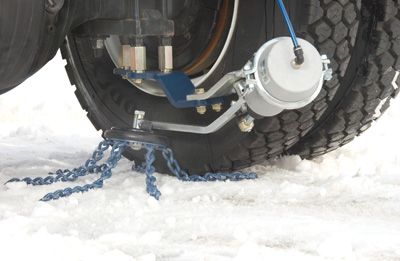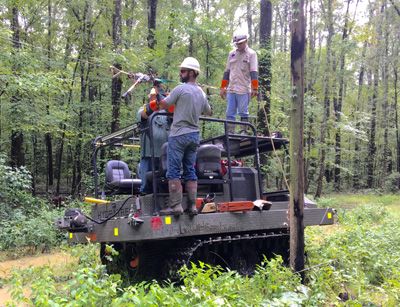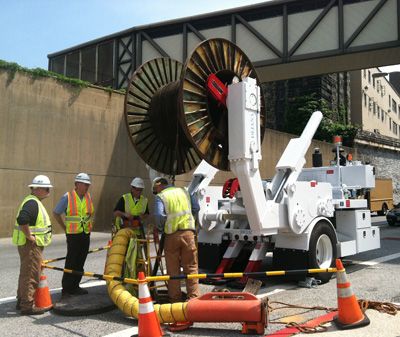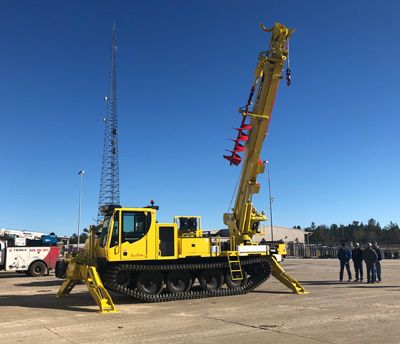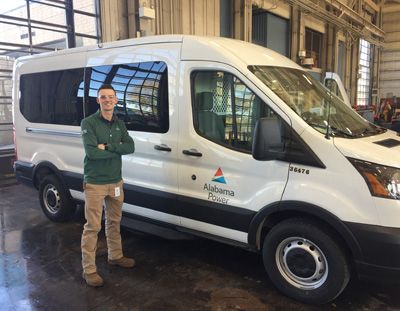Using Telematics to Drive Fleet Safety Improvements
As director of product strategy and telematics at Element Fleet Management (www.elementfleet.com), Kimberly Clark knows exactly how her utility fleet clients are using telematics to improve safety.
In a recent interview with UFP, Clark described a couple of scenarios that have benefited those clients. One – a 4,000-unit energy utility fleet – uses “in-cab feedback and beeping alerts to notify its drivers when they have exceeded a client’s defined threshold for risky driving and provides the driver with immediate and tangible feedback on unsafe driving,” she said. Those same drivers are rated on several risky behaviors, such as hard acceleration, braking, cornering and speeding, as well as seat-belt use.
Another fleet opts to get information in real time. That client’s 1,400-unit utility infrastructure fleet uses telematics to notify managers when a driver violates the company’s predetermined threshold.
Clark said she believes most fleets today use some type of telematics and that safety is a top priority, especially for utility fleets, followed by reducing operating costs, assuring compliance and improving productivity.
The technology also can provide some clarity and a clear advantage over those signs mounted on vehicles that ask how drivers are doing. “With telematics, you’ve got concrete information,” said Steve Berube, senior business development manager for fleet tracking solutions provider Geotab (www.geotab.com). “If someone calls up and says, ‘I saw your driver driving poorly,’ you can tell, were they in that place and what were they doing?”
Positive Reinforcement
Safety-focused telematics can be deployed in various ways. Many fleets use an operator scorecard, on which the fleet manager identifies key topics like seat-belt usage, harsh braking and dangerous maneuvers. Drivers then receive a score based on their driving performance. Savvy fleets might use this as a contest, a method of “positive reinforcement for great driving behavior,” Berube said. Incentives like a day off, a gift card or an end-of-year bonus can drive interest in the program.
Clark agreed. “A key component for an effective safety program is accountability. If your data indicates poor driving behaviors, yet there are no repercussions for this behavior, drivers will be unlikely to change. Likewise, if drivers are exhibiting good behavior behind the wheel, and there is no recognition of their efforts, drivers will lose motivation to continue these good behaviors,” she said.
Other fleets may opt for driver coaching, and many telematics solutions offer an audible option within the vehicle cab, such as a beep while the driver is backing up. With Geotab, it includes spoken words such as, “You’re not wearing your seat belt.”
Some telematics systems incorporate a camera to identify if seat belts are being worn correctly, instead of just merely being buckled. Other systems provide a warning when a driver is backing up or will monitor if backing is occurring.
Accident reconstruction is a growing area that uses footage from the camera or video device. “This provides the ability to use telematics to put together a really clear picture of what happened in an accident, or in those little fender benders that drivers don’t always report,” Berube said.
Cost Savings
With safety specifically, the goal of telematics is to reduce accident rates as well as to reduce mileage by improving dispatch. While much of the safety focus is on driver behavior, Clark pointed out that it can go hand in hand with maintenance “through required vehicle condition reporting and subsequent maintenance.” Safer drivers operating with reduced mileage in safer, well-maintained vehicles can add up to reduced workers’ compensation and liability claims because of fewer accidents.
That is especially important, Berube noted, because fleets operating heavy-duty trucks and larger commercial fleets are seeing “a heavy increase in insurance costs.”
While insurers haven’t necessarily asked fleets to deploy telematics, Berube believes the requests may not be that far off. He points to plug-and-play devices in personal vehicles, something that consumer insurance companies are incentivizing. “The next iteration of this is going to be insurance companies wanting to have insights into your driver behavior while looking at your insurance costs,” Berube said. “Legally, everyone is a little cautious in saying that it can or will lower your rates. It certainly is a progression toward that scenario.”
And utilities may have a leg up on some other types of fleets, according to Berube. “Utilities already have a deep culture of safety, so when it comes to their fleets, there is more of an emphasis on safety itself,” he said.
About the Author: Sandy Smith is a freelance writer and editor based in Nashville, Tennessee.
*****
What’s Next in Safety Telematics?
Kimberly Clark, director of product strategy and telematics for Element Fleet Management, and Steve Berube, senior business development manager for Geotab, see plenty of safety-related improvements for telematics on the horizon, including the following:
- Integrating telematics data with motor vehicle records and collision data will “provide more encompassing views of driver safety performance and high-risk driver identification,” Clark said. “Blending all of the vehicle, device or mobile application driver behavior data with other safety-related data, especially collision data, can be critical to build predictive models that identify drivers more likely to be involved in a crash, and prescriptive actions that can reduce that risk.”
- Smart cameras combined with telematics can “provide additional insight and context into behind-the-wheel driving behaviors such as distracted driving, fatigue and any other driving policies,” Clark said.
- Video integrated with telematics can offer “additional context in a driver coaching scenario,” Berube said. “With traditional telematics alone, a harsh brake is going to show up as a negative on a scorecard, but video may show that the driver was cut off or a dog ran out in the road. It shows a positive: Your driver was paying attention.”







